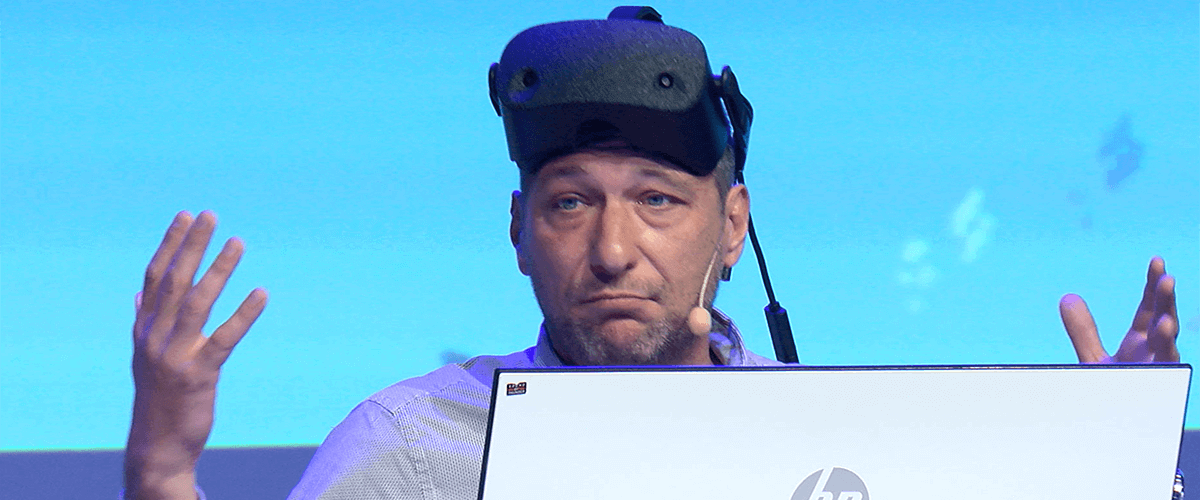Today it seems like the entire world is going virtual. We can have virtual meetings with teammates; take part in virtual conferences; virtual assistants can answer our calls; we can even attend a virtual university. We're living in an age of digital transformation, where artificial intelligence is everywhere and virtual reality (VR) is no longer a techie's pipedream talked about on the 10 o'clock news.
VR has dominated the tech world in recent years. It's a hot topic in the news and a consistent theme in film and television. Today more than 78% of Americans are familiar with VR technology, a remarkable increase from just 45% in 2015. What's more, the global VR market is expected to grow to a whopping $209.2 billion by 2022.
Although, most commonly associated with the gaming industry, the uses of VR are rapidly expanding. Its ability to immerse users in a realistic and safe virtual world benefits businesses across industries. VR has proved to be an invaluable tool for the architecture industry, for instance. From presenting a project to carrying out the design, to marketing it after completion, architects can utilize VR in every activity.

Taking a tour of a point cloud in Bricsys VR.
In this article, we discuss how virtual reality is revolutionizing the architecture industry. We look at the possibilities this exciting new technology holds for architects, and examine how designing in a virtual world can benefit both architects and stakeholders
What is Virtual Reality?
Virtual Reality refers to the use of computer technology to create a simulated environment.
The user places a headset on and is fully immersed in that simulated environment. Instead of simply viewing a screen, the user can interact in a 3D world that stimulates all of the senses. Virtual worlds can be realistic or fantastical. It's a technology that's constantly evolving to be more realistic, more detailed, and more accessible.
VR is used across countless industries, from healthcare to education, to travel and tourism; VR has proved itself to be a valuable tool for streamlining business processes and enhancing the customer experience. In architecture, VR is gradually changing the way that architects design and experiment with their work.

Presenting your ideas has never been so clear.
Design and Visualization
One of the most important (and often most difficult) tasks for architects is visualizing their design in a space. Visualization of an architectural design not only brings your idea to life, but it also allows you to tackle construction logistics, materials, and the environmental factors that might affect your design.
During the design process, architects using VR can step into a building and change its windows, floors, and much more, all from a headset and a pair of gloves. Not only does this streamline the process, but it also makes it more precise and diminishes the probability of errors later on down the line.
When combined with BIM models, VR is a powerful tool that breathes life into an architect's vision. VR makes it possible to see and feel what a building will look like once constructed. Home-owners can, not only imagine themselves in their new home, but also walk through and interact inside it and get a real sense of space. By simulating designs, architects can highlight problems and make adjustments at the earliest stages of design, saving time and money for both the architect and the stakeholder.
Improve Client Relations
One of the main challenges architects face is making their clients understand and connect with their designs. Virtual reality improves client relations by tackling common visualization pitfalls and building confidence in the architect's ideas through an immersive experience.
In recent years, architects would present projects to clients with 3D renderings, floor plans, or detailed power-point presentations. Pitching an idea to a client that conveys the design and ideas of your architectural vision isn't an easy task to handle. Selling the idea isn't simple, and clients often can't visualize what the finished project will look like. Especially clients who don't understand the technical elements of models, blueprints, and drawings.
Nowadays, architects can create presentations, with the help of VR, that fully immerse the client in the virtual, final design. This allows clients to experience and interact with, the finished project before even the foundation has been dug. What's more, VR can streamline the, often long-winded, process of sending designs back and forth to make adjustments. With VR tools, you can send a project directly to a client to tour and have them mark up the idea with their feedback and concerns.
By allowing the client to visually experience the building on a 1:1 scale and "walk" through rooms furnished with interior items to meet their tastes, architects can speed up the design process and achieve better client satisfaction rates by ensuring the project meets the stakeholder's expectations.
By using VR to speed up client approval processes, architects can minimize late-stage design adjustments, allowing them to effectively streamline client relations and increase ROI (Return On Investment ) quicker.

Total immersion in Bricsys VR.
Streamline Collaboration
When it comes to architecture projects, there are often various stakeholders and teams involved. This is particularly true for larger architecture companies working on bigger projects. Architects, engineers, and contractors will often have different ideas about how a project should be executed, which can result in miscommunication and avoidable mistakes.
Much like Bricsys 24/7 and CPaaS technology connect business teams and improve collaboration with cloud-based document sharing and messaging, virtual reality can enhance collaboration among architects, stakeholders, engineers, contractors, and anyone else involved with a project.
Using VR throughout the design process allows teams to collaborate more effectively as they have a more in-depth understanding and visualization of the project. VR is easy to share among team members and gives each collaborator a clearer understanding of the project, allowing them to address any concerns immediately.
Visualizing the project isn't just important for clients to understand what the final product will look like. It's crucial that everyone involved in the imagining, design, and construction of a building are on the same page and working towards the same goal.

Exploring a point cloud in Bricsys VR.
Environmental Data
It's difficult to understand how the environment may impact a building once it's constructed. Video, images, and other traditional display systems can incorporate environmental elements like sunlight and reflections, but the other possibilities are quite limited.
With virtual reality technology, architects can overlay a virtual environment with data, to bring elements, like safety, heat, and light, to life. This allows clients to see and feel how a design will perform in real-life environmental conditions, allowing them to address any comfort and safety-related concerns efficiently.
One such environmental factor that can be determined using VR is light. Ray trace rendering technology accurately simulates light, allowing architects and designers to understand how natural light will affect their project.
If the architect is designing a restaurant, for instance, they'd need to consider how natural light exposure might impact customers in a dining room at different times of the day. Armed with this information, they can ensure their design prevents the possibility of sunlight disturbing a customer's dining experience. In this way, VR can be used to save time for both designers and clients by highlighting potential problems before construction begins.
Virtual Reality Renderings as a Marketing Tool
Do you ever wonder what happens to those incredible VR renderings once the design is approved and construction is underway? The potential for VR in architecture goes far beyond design and visualization, even once a building is complete.
VR renderings are often repurposed and used in the marketing strategy of a building project. Humans are visual beings. Just like video content is used by marketing teams to align consumers with a product or brand, VR renderings can be used by building owners to attract potential tenants. These 3D renderings can also be used to update tenants on the construction process.
VR can also be repurposed into training videos for new employees and store openings. They can be used to show how visitors will interact in a space, allowing employees to better understand the customer experience. Throughout the video, management can stop to explain each customer interaction and the correct procedures to follow for effective customer engagement.
The Future of Virtual Reality in Architecture
We, as a society, are experiencing a digital change of unprecedented scale. In the last 25 years, virtual reality has gone from being a far-fetched dream to an expectation. VR technologies are becoming increasingly powerful and sophisticated, resulting in more realistic experiences and more potential for use.
What's more, VR is becoming more affordable and more accessible for smaller architecture and design firms, which means that we'll likely be seeing a lot more of it in years to come. It's also likely to be more present in education, providing a virtual reality for architecture and design students around the world to interact with and learn from.

Create a totally immersive experience with Bricsys VR.
Virtual reality enables architects to manage their projects, add to them, and edit them as they please while storing their data in a realistic, simulated environment, much in the same way a hosted PBX solution allows businesses to transfer their operations and data online.
VR technology not only allows architects and clients to immerse themselves in computer-generated simulations of their project designs. It can also play an important role in streamlining the design process, improving client and team relations, and understanding environmental data. The unpredictable future of VR makes it an exciting and dynamic tool that will continue to provide tangible results and present new opportunities to architecture professionals as it advances and develops.

